第17章 II(1)
It may be thought that a direct attack upon the pretensions of HOMOEOPATHY is an uncalled-for aggression upon an unoffending doctrine and its peaceful advocates.
But a little inquiry will show that it has long assumed so hostile a position with respect to the Medical Profession, that any trouble I, or any other member of that profession, may choose to bestow upon it may be considered merely as a matter of self-defence. It began with an attempt to show the insignificance of all existing medical knowledge. It not only laid claim to wonderful powers of its own, but it declared the common practice to be attended with the most positively injurious effects, that by it acute diseases are aggravated, and chronic diseases rendered incurable. It has at various times brought forward collections of figures having the air of statistical documents, pretending to show a great proportional mortality among the patients of the Medical Profession, as compared with those treated according to its own rules. Not contented with choosing a name of classical origin for itself, it invented one for the whole community of innocent physicians, assuring them, to their great surprise, that they were all ALLOPATHISTS, whether they knew it or not, and including all the illustrious masters of the past, from Hippocrates down to Hunter, under the same gratuitous title. The line, then, has been drawn by the champions of the new doctrine; they have lifted the lance, they have sounded the charge, and are responsible for any little skirmishing which may happen.
But, independently of any such grounds of active resistance, the subject involves interests so disproportioned to its intrinsic claims, that it is no more than an act of humanity to give it a public examination. If the new doctrine is not truth, it is a dangerous, a deadly error. If it is a mere illusion, and acquires the same degree of influence that we have often seen obtained by other illusions, there is not one of my audience who may not have occasion to deplore the fatal credulity which listened to its promises.
I shall therefore undertake a sober examination of its principles, its facts, and some points of its history. The limited time at my disposal requires me to condense as much as possible what I have to say, but I shall endeavor to be plain and direct in expressing it.
Not one statement shall be made which cannot be supported by unimpeachable reference: not one word shall be uttered which I am not as willing to print as to speak. I have no quibbles to utter, and I shall stoop to answer none; but, with full faith in the sufficiency of a plain statement of facts and reasons, I submit the subject to the discernment of my audience.
The question may be asked in the outset,--Have you submitted the doctrines you are professing to examine to the test of long-repeated and careful experiment; have you tried to see whether they were true or not? To this I answer, that it is abundantly evident, from what has often happened, that it would be of no manner of use for me to allege the results of any experiments I might have instituted. Again and again have the most explicit statements been made by the most competent persons of the utter failure of all their trials, and there were the same abundant explanations offered as used to be for the Unguentum Armarium arid the Metallic Tractors. I could by no possibility perform any experiments the result of which could not be easily explained away so as to be of no conclusive significance.
Besides, as arguments in favor of Homoeopathy are constantly addressed to the public in journals, pamphlets, and even lectures, by inexperienced dilettanti, the same channel must be open to all its opponents.
It is necessary, for the sake of those to whom the whole subject may be new, to give in the smallest possible compass the substance of the Homoeopathic Doctrine. Samuel Hahnemann, its founder, is a German physician, now living in Paris," [Hahnemann died in 1843.] at the age of eighty-seven years. In 1796 he published the first paper containing his peculiar notions; in 1805 his first work on the subject; in 1810 his somewhat famous "Organon of the Healing Art;" the next year what he called the "Pure Materia Medica;" and in 1828 his last work, the "Treatise on Chronic Diseases." He has therefore been writing at intervals on his favorite subject for nearly half a century.
The one great doctrine which constitutes the basis of Homoeopathy as a system is expressed by the Latin aphorism, "SIMILIA SIBIILIBUS CURANTUR," or like cures like, that is, diseases are cured by agents capable of producing symptoms resembling those found in the disease under treatment. A disease for Hahnemann consists essentially in a group of symptoms. The proper medicine for any disease is the one which is capable of producing a similar group of symptoms when given to a healthy person.
It is of course necessary to know what are the trains of symptoms excited by different substances, when administered to persons in health, if any such can be shown to exist. Hahnemann and his disciples give catalogues of the symptoms which they affirm were produced upon themselves or others by a large number of drugs which they submitted to experiment.